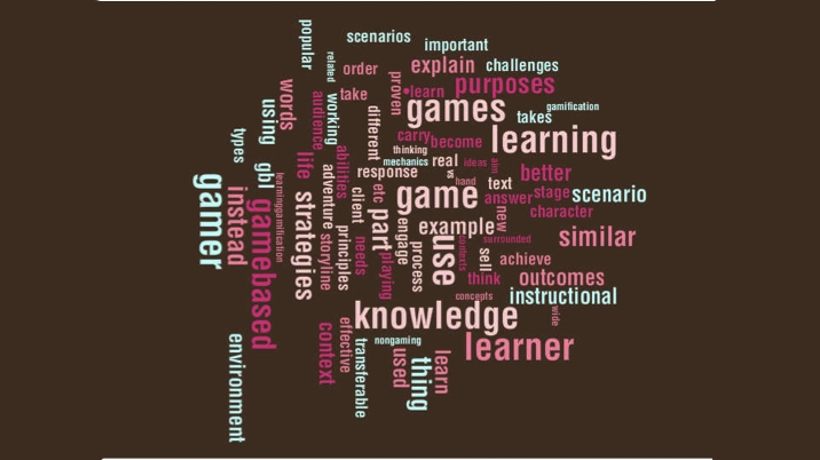Why Is Gaming So Important To The Learning Success?
The use of games with learning purposes is not new. Perhaps one of the most remarkable and significant person on this issue is Jean Piaget and his Constructivism approach. According to this, learning is an active process where the learner takes part of it since he builds up new ideas based upon current or past knowledge. Some of the advantages of using games with learning purposes are:
- Learn from your mistakes in a safe and simulated environment.
- Learn other ways or more effective techniques to carry out something in particular.
- The context of a game is generally more engaging because at every stage there is a challenge to achieve that keeps the learner motivated.
Gamification vs Game-Based Learning
Nowadays we are surrounded by a wide range of concepts related to games that can be used with learning purposes such as Gamification or Game-Based Learning.
Gamification is the process of using game mechanics and game thinking in non-gaming contexts to engage users and to solve problems. It is popular in marketing purposes but it is also becoming popular in learning contexts.
On the other hand the aim of Game-Based Learning (GBL) is to teach something while the learner is playing. A good example of GBL is the Academy Island from Cambridge ESOL where kids can learn English while they take part in an adventure game.
How to succeed with Game-Based Learning (GBL)
- Align game types with learning outcomes
There are different types of games: boarding games, adventure games, puzzle games, etc. Analise them and think about which is more suitable to use depending on each situation and the learning outcomes. Role-play games appeal when the audience is for example a salesman who needs to learn how to deal with the most common client objections in order to sell better. - Turn learning and knowledge into the clue
When the gamer receives a positive output by using his knowledge, it is more probable he will use it again in the game.If the game takes place in a corporate scenario similar to the context of the user, he understands that what he has used in the game would have a similar response in the real life.In other words, it will become a repetitive behavior transferable to his working environment. - Apply proven effective instructional strategies to design the game
Some of proven instructional strategies are: the use of graphics instead of only text, to show and demonstrate how to do things instead of just put them on a list, to let learners self-asses their knowledge instead of just answer a final test and the use of similar scenarios that are easily transferable to the daily life of the gamer.
Other useful instructional strategies are the use of self-explanation questions and the use of meaningful feedback. Avoid the typical “yes, you’re right” or the negative version of it. Explain to him why he hits the nail on the head or why he did not get the right answer. In other words, do not miss interactivity. - Guide the gamer to achieve goals
As it happens in casual games, in the GBL the learner has to know what to do and what is the purpose of doing something. If not, your gamer will turn off the game and will never open it again. Explain him the goal of each scenario and what the reward is in return. You can use different strategies to explain this: text on the screen, a character that talks to the gamer, etc. - The game must be immersive
Take care of the storyline, the background of the game is important. It has to be coherent, especially if the scenario tries to simulate a working environment. If you want them to transfer the knowledge acquired, the scenarios must be similar to the ones in the real life. Moreover, if you let the gamer be part of the storyline instead of being only who controls the character you will get better results. To sum up, let the learner be part of the game. - It must be challenging. Neither so easy nor extremely difficult.
The key is to increase the difficulty while playing. At the beginning of the game, the gamer needs to get used to the game, but after this previous stage, he wants challenges to carry on playing. If the gamer does not face up challenges he will not be engage and you will lose the learner and so your learning outcomes. - The game must be reliable
If the audience of your game are employees they expect to obtain knowledge, skills and abilities in order to do their job better. In other words, the most important thing is to focus on the learning outcomes. As in the example above, the game expects an environment to practice his sales strategy, to see the response of the client and to learn other effective abilities for him to sell better.
My advice
Before designing a Game-Based Learning, become a gamer first and then think about how to adapt the game principles in a learning context.
References
- Colvin Clark, R., Mayer, R. E. E-Learning and the Science of Instruction: Proven Guidelines for Consumers and Designers of Multimedia Learning. 3rd edition. San Francisco, CA: John Wiley & Sons/Pfeiffer, 2011. Print. ISBN-10: 0470874309 - ISBN-13: 978-0470874301
- Derryberry, A. “Serious Games: online games for learning”. Adobe. November 2007. 26th of November 2012. Web site: http://www.adobe.com/products/director/pdfs/serious_games_wp_1107.pdf
- New Media Consortium (NMC), Marcus Institute for Digital Education in the Arts (MIDEA). “NMC Horizon Report > 2012 Museum Edition”. New Media Consortium and Marcus Institute for Digital Education in the Arts. 2012. 26th of November 2012. Web site: http://www.nmc.org/pdf/2012-horizon-report-HE.pdf
- Connolly, T. Stansfield, M. “Using Games-Based eLearning Technologies in Overcoming Difficulties in Teaching Information Systems”. University of Paisley. Volume 5, 2006. Web site: http://www.jite.org/documents/Vol5/v5p459-476Connolly170.pdf









